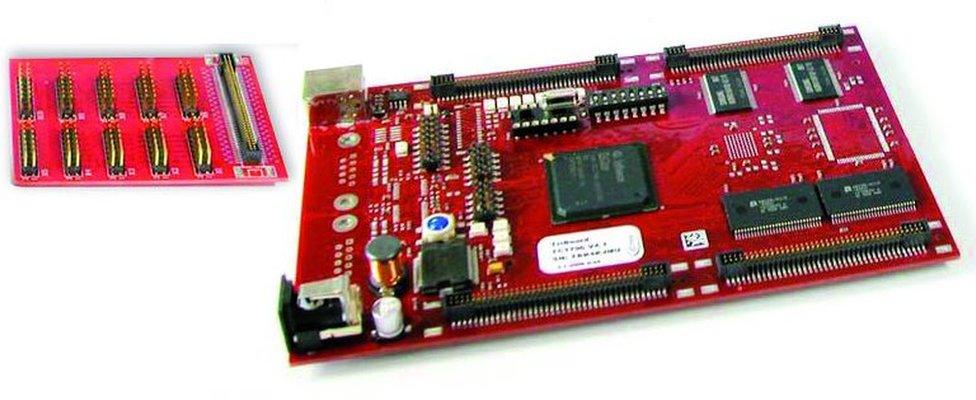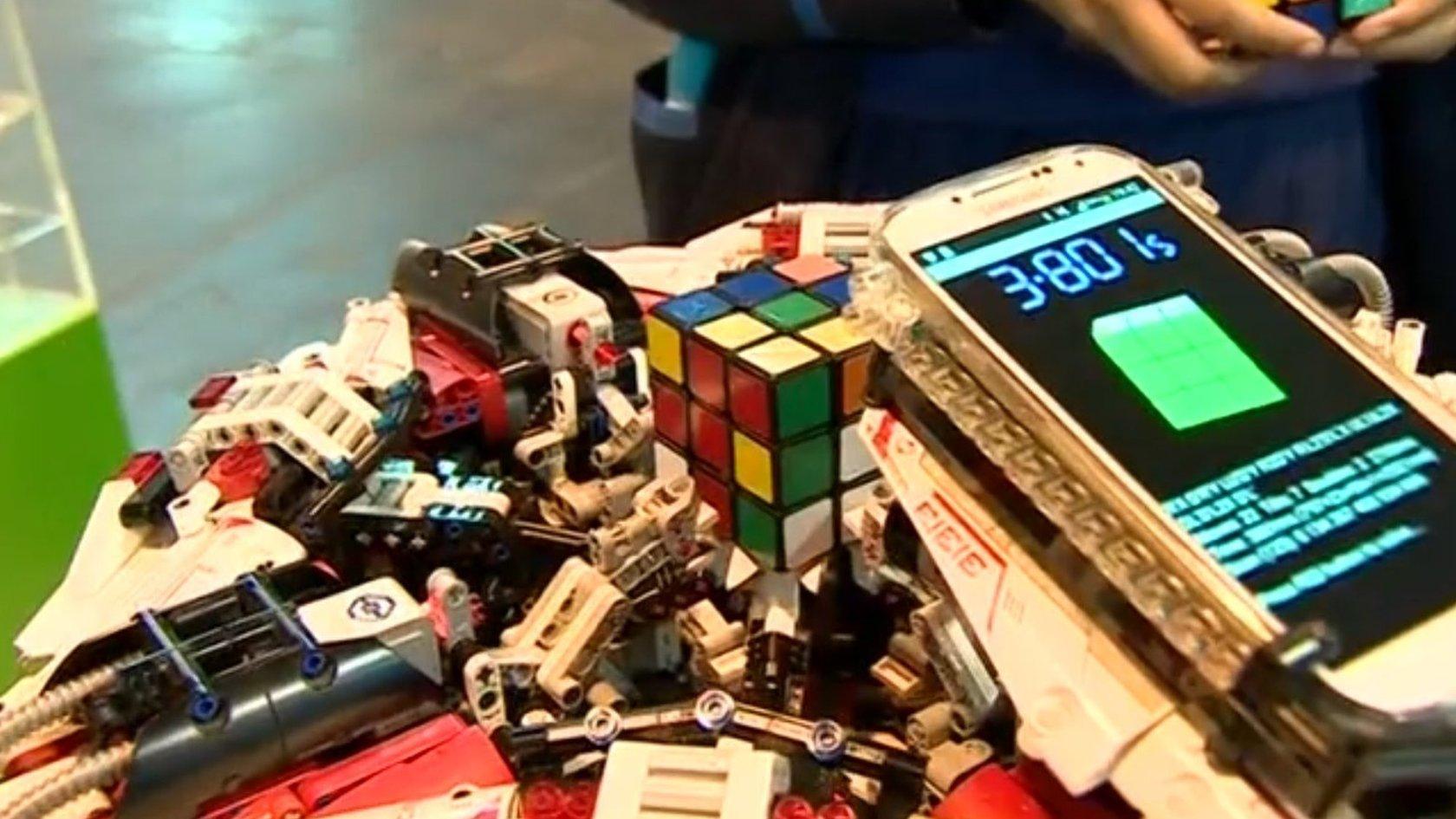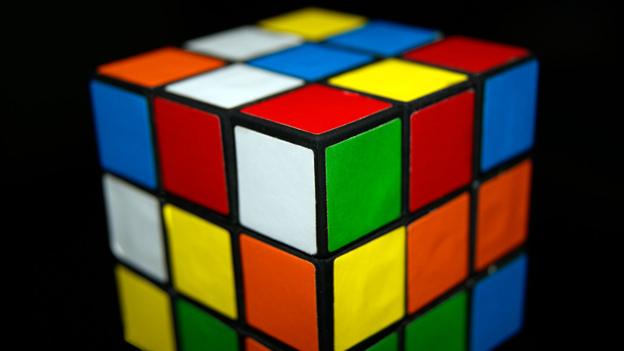Robot 'sets new Rubik's Cube record'
- Published
WATCH: Robot Rubik's Cube record-breaker
A robot has just set a new record for the fastest-solved Rubik's Cube, according to its makers.
The Sub1 Reloaded robot, external took just 0.637 seconds to analyse the toy and make 21 moves, so that each of the cube's sides showed a single colour.
That beats a previous record of 0.887 seconds, which was achieved by an earlier version of the same machine using a different processor.
Infineon provided its chip to highlight advancements in self-driving car tech.
But one expert has questioned the point of the stunt.
Twist and turn
Infineon staged the record attempt at the Electronica trade fair in Munich.
At the press of a button, shutters covering the robot's camera sensors were lifted, allowing it to detect how the cube had been scrambled.
It then deduced a solution and transmitted commands to six motor-controlled arms. These held the central square of each of the cube's six faces in place and spun them to solve the puzzle.
All of this was achieved in a fraction of a second, and it was only afterwards that the number of moves could be counted by checking a software readout.
A special "speed cube" - designed to have less friction between its parts than the original version of the toy - was used to help keep the time to a minimum.
Infineon said the World Cube Association - the governing body for Rubik puzzle competitions - had approved its use.

Infineon wants more automakers to use its chips to make their vehicles safer
"We used this as a metaphor to show how digital systems are constructed," said the German company's spokesman Gregor Rodehueser.
"We want to show that problems can be solved much more efficiently using microelectronics.
"This is also the case when it comes to automated driving, where you have to have very low latencies and absolutely reliable and quick technologies."
By contrast, the official Rubik's Cube record for a human is 4.904 seconds, which was set by a 14-year-old boy in 2015. And in recent days another youth completed the task, external in 4.74 seconds.
Infineon wants to highlight the speed at which its Aurix microcontrollers can help cars respond to obstacles and automatically apply their brakes.
Rubik's Cube fanatic Lucas Etter is aiming to get even faster after beating the current world record
But one artificial intelligence expert said the test was of limited use.
"Rubik's Cube solutions are algorithmic and ideally suited to computer programs and the speed of Sub1 was genuinely impressive," said Prof Noel Sharkey, from the University of Sheffield.
"However, autonomous driving, unlike Rubik's Cube, is in an open environment with a very large number of unanticipated circumstances.
"The hardest part is in processing the sensory information and trying to work out whether it is a situation that requires braking or swerving or ignoring.
"It is a bit like asking Sub1 if it is a Rubik's Cube in front of it or a pile of biscuits that needs to be crumbled for the base of a cheesecake.
"Obviously processor speed helps, but it is minor part of the problem."
To be regarded as an official record, the time must be signed off by the Guinness World Records organisation, which was not present at the event.
"If Infineon feel they have beaten the current record, we encourage them to make an application on our website and submit their evidence for our records management team to review," said a spokeswoman.
Mr Rodehueser said the paperwork would be submitted shortly.
- Published9 November 2016

- Published15 March 2014

- Published28 April 2014
